Climactic Future?
Climate change is the biggest global health threat of the 21st century and tackling it could be our greatest health opportunity. While we already know the elephant is in the room, its potential to create future damage is huge and our current efforts to bring it under control are insufficient. Read on to discover what our robot, Athena, thinks the future of our climate could be, act accordingly.
What's Changing
Summary Radar chart Our longer than usual time outlook of 2040 shows a sectoral map that’s off the scale for the first time in any of our Trend Alerts. We can expect financial services organizations, retailers, manufactures and construction and IT companies specially to come under pressure by then to show their climate positive credentials. This may seem a long way-off, but the journey will be not be easy and efforts must start now to be ready in time with big prizes for the leaders and opprobrium for the laggards from the general public. Emerging Drivers: Despite the likely threat reported by scientists our robot, Athena, places climate change as relatively low intensity versus more short-term opportunities in artificial intelligence and digitalization. It is for this reason we class climate change as the elephant in the room. It is likely to become an ever more urgent and impactful threat as the years roll-on but without much more action now by the public and all organizations we may face an uncontrollable disaster in the decades ahead. Today, governments and not for profits are much more engaged in solving climate change issues. Tomorrow, it will require much more vision and action from smart city leaders, corporate executives and indeed, the general public to reduce the worst effects of coming climate change. Sentiment: There are many efforts going on in reducing emissions through renewable energies, carbon capture etc and investments by governments in reducing the effects of climate change. Yet, commercial markets have been slow to respond. Organizations too are taking various tactical initiatives to contribute to the effort though none has yet emerged with a stated leadership position and brand reputation centered on this issue. Pundits and experts comments are showing more concern at the lack of progress and the hypocrisy shown at COP24 in Poland this month. No wonder protesters are taking the issue to the streets and demonstrating just as they did at G7 meetings about Banks’ support for unsustainable projects in the early part of this century. Pie Charts: Climate change is still only seen as of medium consequence by Athena’s analysis of the 10,000 plus forecasts she aggregated but the effects will likely last at least 200 years and cost economies trillions of dollars in the decades above. Sadly, its likely to be another 15 years before the public really starts to put pressure on organizations to act, as they become the victims of heat waves, disputes over drinking water rights, major migratory flows from one country to another and other disasters. Year-on-Year: The sectors with the most to benefit from reducing their own climate impacts are financial services, construction, transport, energy and retail. We note that most governments should be making a lot more efforts, but they lag far behind many other sectors in making this a priority. And, overall the level of intensity is only high, whereas for such a life-threatening issue with major opportunities it should be at very high. As climate change continues to bring disasters around the world, we expect the intensity to increase inexorably. Geography: Athena reports that, geographically, countries will need to stop subsidising the destruction of the world especially the three big oil and gas producing countries or grassroots uprisings all over the world will begin to manifest themselves against those who look only at short-term gain. Most of those on the list below seem out of touch, out of power or soon will be! The sustainability debate began to be won when business leaders began challenging their organizations to find new solutions that simultaneously embraced people, profit and planet and which led to early circular economy efforts. It’s our opinion that once again we need leaders at all levels to take up the challenge. We would be very willing to help them/you! Visuals System map Radar Graph-It Pundits and experts comments are showing more concern at the lack of progress and the hypocrisy shown at COP24 in Poland this month. No wonder protesters are taking the issue to the streets and demonstrating just as they did at G7 meetings about Banks’ support for unsustainable projects in the early part of this century. Pie Charts Heat map Most of those on the list below seem out of touch, out of power or soon will be! It is an understandable focus right now from governments and NGO’s to focus on reducing the threat of climate change from subsidy removal, increased taxes and regulations restricting use of climate worsening resources. However, we do not see enough focus on seizing the many commercial opportunities to reduce climate change for the benefit of shareholders and all other global stakeholders alike from any one organization. The sustainability debate began to be won when business leaders began challenging their organizations to find new solutions that simultaneously embraced people, profit and planet and which led to early circular economy efforts. It’s our opinion that once again we need leaders at all levels to take up the challenge. We would be very willing to help them!
Analysis
Systems map: While the systems map shows the global influence and many expected impacts of climate change its noticeable that it does not show any major commercial organizations fully engaged in dealing with its future impacts. The impacts on all our health will likely be experienced by wilder weather, pollution, biodiversity reduction, water and food shortages, all affecting our health.
Graph-It: Again by 2040 efforts to improve infrastructure against the worst of climate change effects will mean massive investment and huge damage to global and local economies if climate change is not somewhat mitigated in time.
But, the world will need to infuse at least USD53 trillion in the energy sector alone by 2035 to prevent dangerous climate change while at the same time suffering significant economic losses from bigger storms, forest fires, and sea level rises. Somethings will have to give, and painful disruptions are almost inevitable; far worse than the 1929 or 2009 recessions.
Heat map: The Heat Map shows the environmental sector and food and agriculture will need to seriously up their game in protecting biodiversity and growing food on non-traditional land and in buildings as climate change makes new deserts of some regions and greens others. The energy sector will need to continue its efforts to reduce coal use and move to renewables as quickly as possible and faster than now especially in Asia. Prime movers in this regard are Europe, the U.S, and Australia. policies.
Leaders: The leader board shows the greatest efforts to reduce the impacts of climate change are being made in the U.S, Canada, UK, India, China and Australia and the greatest foci is on reducing emissions, energy use water use. The European Union is leading the world in attempting to reduce climate change, but it too is probably not doing enough to bring the key global actors together. We can expect China to potentially become the leader from its low base of the past few years. Interestingly, no global personalities stand out as leading the world to solve climate change. One or more will no doubt appear as the problem gets worse.
SWOT: It is an understandable focus right now from governments and NGO’s to focus on reducing the threat of climate change from subsidy removal, increased taxes and regulations restricting use of climate worsening resources. However, we do not see enough focus on seizing the many commercial opportunities to reduce climate change for the benefit of shareholders and all other global stakeholders alike from any one organization.
For more detailed explanation of the graphics below please click here.
While the systems map shows the global influence and many expected impacts of climate change its noticeable that it does not show any major commercial organizations fully engaged in dealing with its future impacts. The impacts on all our health will likely be experienced by wilder weather, pollution, biodiversity reduction, water and food shortages, all affecting our health.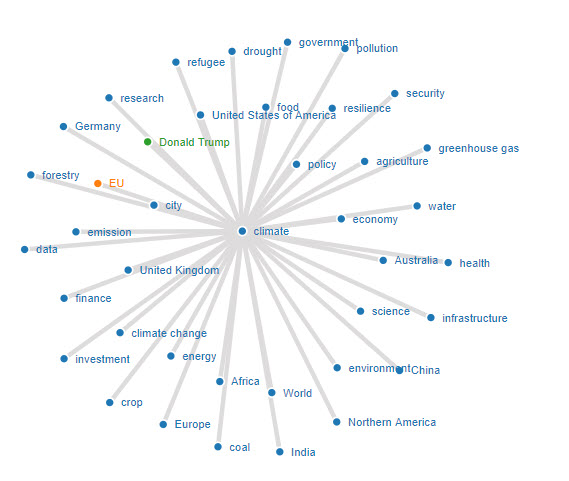
Our longer than usual time outlook of 2040 shows a sectoral map that’s off the scale for the first time in any of our Trend Alerts. We can expect financial services organizations, retailers, manufactures and construction and IT companies specially to come under pressure by then to show their climate positive credentials. This may seem a long way-off, but the journey will be not be easy and efforts must start now to be ready in time with big prizes for the leaders and opprobrium for the laggards from the general public.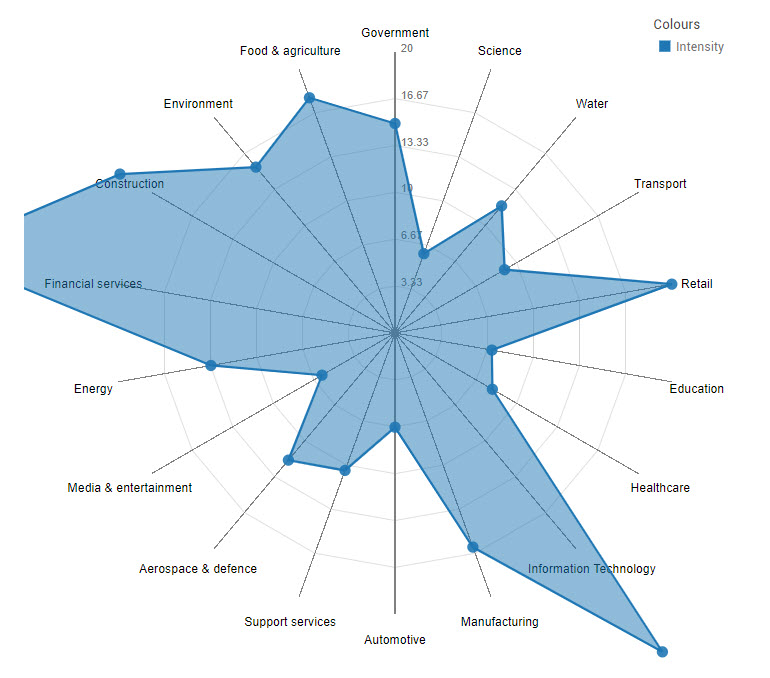
Again by 2040 efforts to improve infrastructure against the worst of climate change effects will mean massive investment and huge damage to global and local economies if climate change is not somewhat mitigated in time.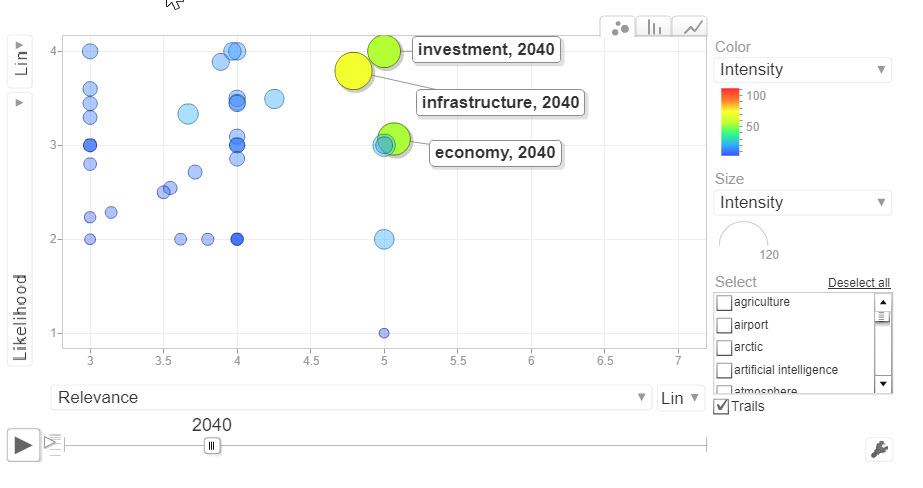
Emerging Drivers
Despite the likely threat reported by scientists our robot, Athena, places climate change as relatively low intensity versus more short-term opportunities in artificial intelligence and digitalization. It is for this reason we class climate change as the elephant in the room. It is likely to become an ever more urgent and impactful threat as the years roll-on but without much more action now by the public and all organizations we may face an uncontrollable disaster in the decades ahead. Today, governments and not for profits are much more engaged in solving climate change issues. Tomorrow, it will require much more vision and action from smart city leaders, corporate executives and indeed, the general public to reduce the worst effects of coming climate change.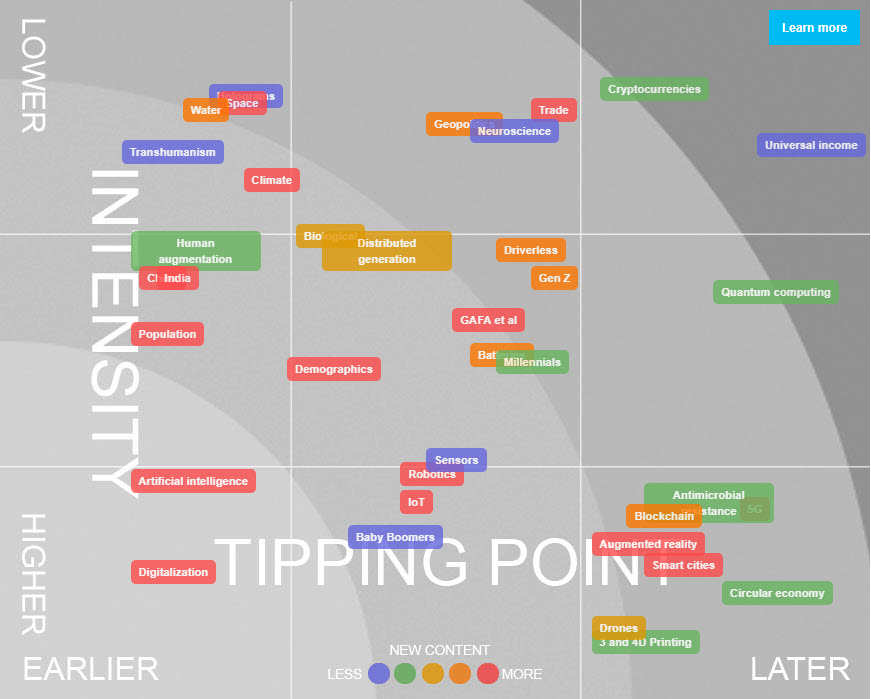
Sentiment
There are many efforts going on in reducing emissions through renewable energies, carbon capture etc and investments by governments in reducing the effects of climate change. Yet, commercial markets have been slow to respond. Organizations too are taking various tactical initiatives to contribute to the effort though none has yet emerged with a stated leadership position on this issue.
But, the world will need to infuse at least USD53 trillion in the energy sector alone by 2035 to prevent dangerous climate change while at the same time suffering significant economic losses from bigger storms, forest fires, and sea level rises. Somethings will have to give, and painful disruptions are almost inevitable; far worse than the 1929 or 2009 recessions.

Climate change is still only seen as of medium consequence by Athena’s analysis of the 10,000 plus forecasts she aggregated but the effects will likely last at least 200 years and cost economies trillions of dollars in the decades above. Sadly, its likely to be another 15 years before the public really starts to put pressure on organizations to act as they become the victims of heat waves, disputes over drinking water rights, major migratory flows from one country to another and other disasters.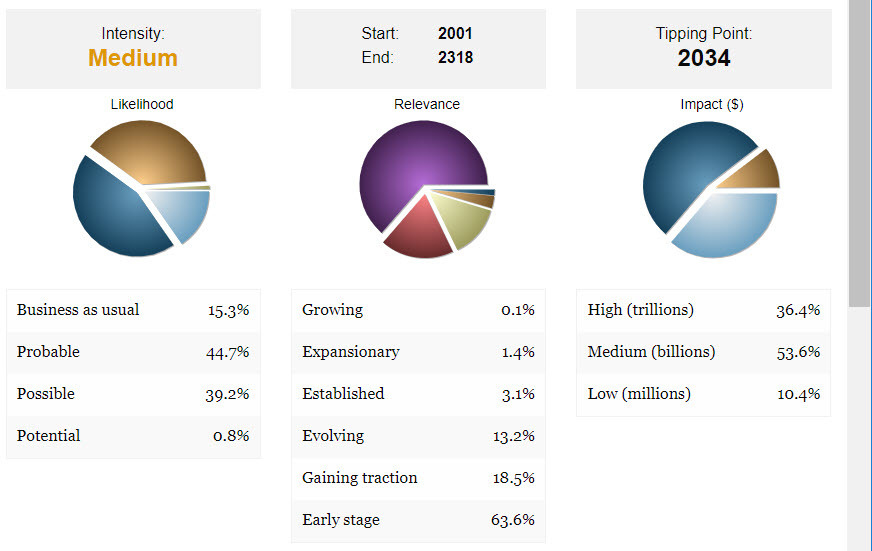
Year-on-Year
The sectors with the most to benefit from reducing their own climate impacts are financial services, construction, transport, energy and retail. We note that most governments should be making a lot more efforts, but they lag far behind many other sectors in making this a priority. And, overall the level of intensity is only high, whereas for such a life-threatening issue with major opportunities it should be at very high. As climate change continues to bring disasters around the world, we expect the intensity to increase inexorably.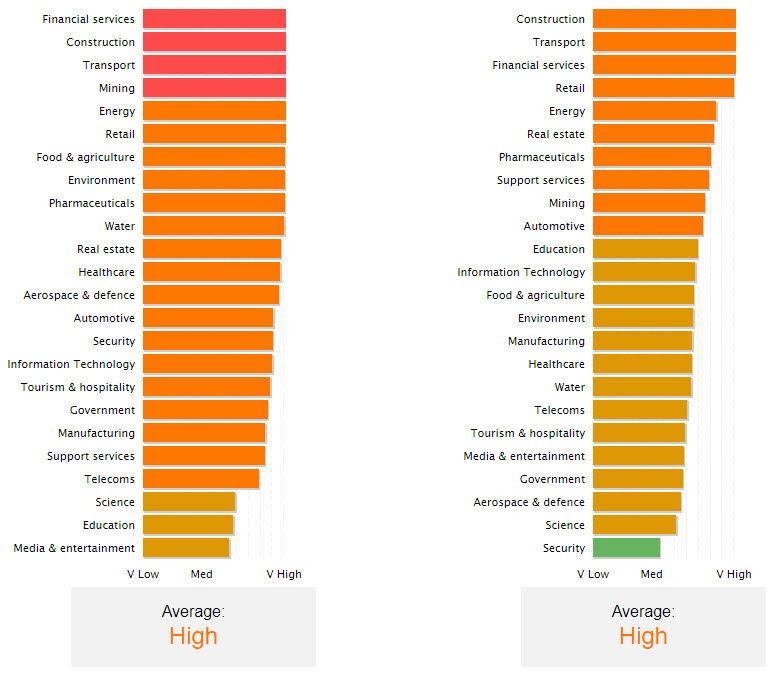
The Heat Map shows the environmental sector and food and agriculture will need to seriously up their game in protecting biodiversity and growing food on non-traditional land and in buildings as climate change makes new deserts of some regions and greens others. The energy sector will need to continue its efforts to reduce coal use and move to renewables as quickly as possible and faster than now especially in Asia. Prime movers in this regard are Europe, the U.S, and Australia. policies.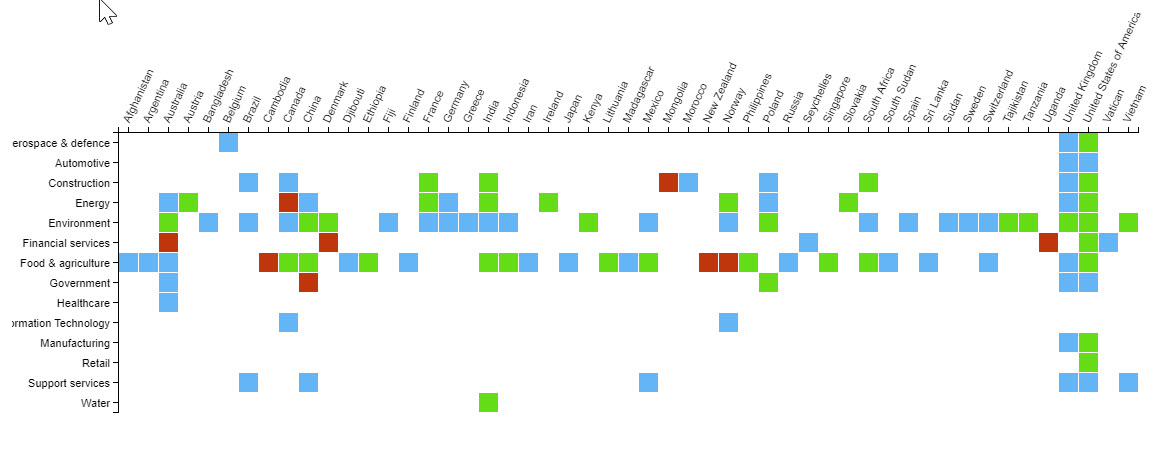

Geography
Athena reports that, geographically, countries will need to stop subsidising the destruction of the world especially the three big oil and gas producing countries or grassroots uprisings all over the world will begin to manifest themselves against those who look only at short-term gain.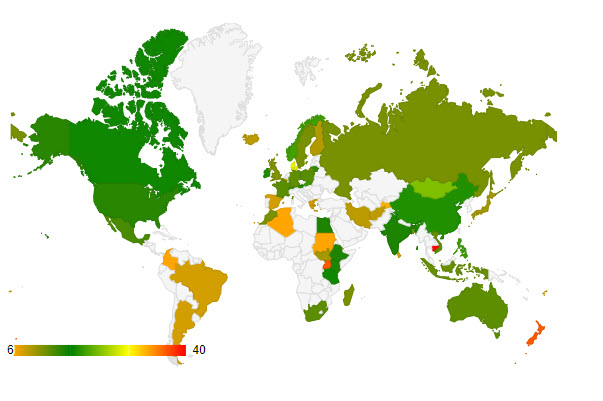
Leaders
The leader board shows the greatest efforts to reduce the impacts of climate change are being made in the U.S, Canada, UK, India, China and Australia and the greatest foci is on reducing emissions, energy use water use. The European Union is leading the world in attempting to reduce climate change, but it too is probably not doing enough to bring the key global actors together. We can expect China to potentially become the leader from its low base of the past few years. Interestingly, no global personalities stand out as leading the world to solve climate change. One or more will no doubt appear as the problem gets worse.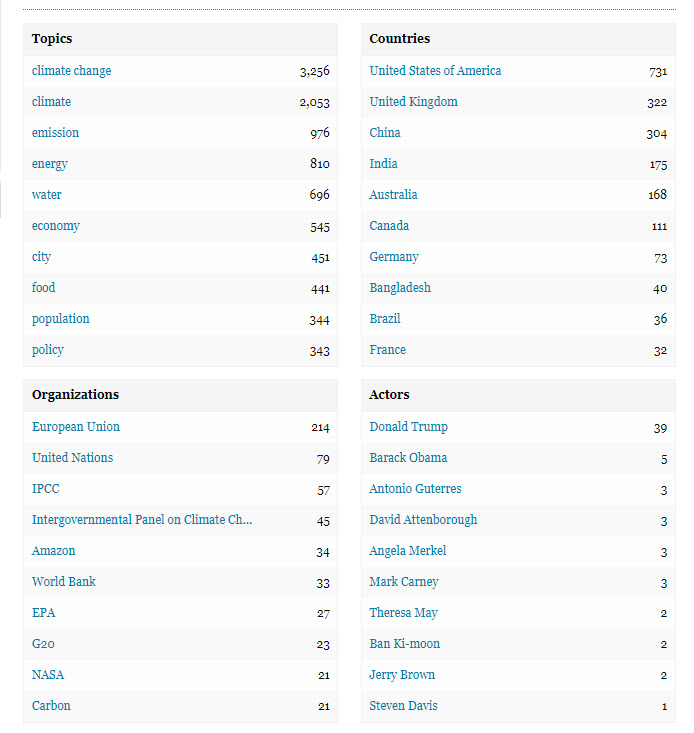
SWOT
Lastly, the SWOT chart shows the aggregate level of opportunities and strengths in climate change to be finely balanced between opportunities and threats versus opportunities and strengths.
Evidence
Extracted forecasts found by Athena and linked back to the original articles, reports and PowerPoints (Insights) that she found can be found below using this search term:
Implications
rise report change scenario action emission opportunity policy scientist level Question Custom Services Sources Athena Athena is apolitical. She will report forecasts from different viewpoints however distasteful that might be to our own values. Wearing rose-colored glasses is not her purpose; reporting potential futures is. So, we recommend you check her veracity before responding to her extracted forecasts. Just like humans, Athena can be fallible. Do recognize that you and your associates are biased too. But whereas you tire, make mistakes and only recognize what interests you, she does not. She might miss or misinterpret as you do, but with far less frequency and she'll take uncomfortable truths and alternative ideas in her stride. But, please let us know if you feel her bias can be reduced. We want to do our best for you. And, as with any research, you should check and triangulate her findings for yourself. Keep up to date: Global goals | Social changes | Sector prospects | G20 watch | Key Organizations You can also ask us to set-up private topics for you (clients only) to achieve the same thing as this Trend Alert for your associates or set up email subscriptions (Registration required) on your favorite subjects.
We can produce equivalent reports to this one on any topic for just $1,000 (Plus VAT in Europe). Market rates are usually at least five to ten times this price. Or, you can subscribe to our service and make these yourself at will and use the forecasts in private, collaborative workshops to develop your strategic responses in hours rather than the weeks and months of traditional foresight projects using these methods below:
Options | Gapfinder | Causal Layered Analysis | Scenarios | Three Horizons
Do contact us to see how we can help you track emerging uncertainty issues and developments as they are announced or reported.
Athena used the sources below as the top ones to create this report and determined which embedded forecasts are included in this Trend Alert. She found 10.787 forecasts in seconds on 13th December 2018 to allow us to publish this report in less than ninety minutes. She can turn these into PowerPoint slides and Audio files in minutes too as you wish, or we can prepare a full customized and professionally written brief for you to order covering all these forecasts.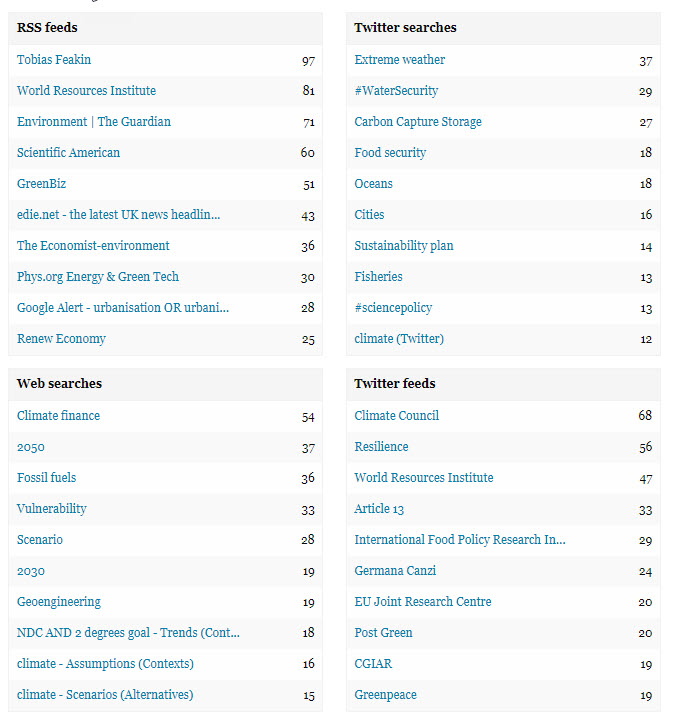
Athena does show duplicates to aid your understanding of themes as well as contradictory forecasts. She may also show near-duplicates. You can speed read past the duplicates and near-duplicates if you wish, though the latter may show additional information. You can use the contradictory, and likely uncertain forecasts she finds to imagine different scenarios. The future is unpredictable, but we can examine the possibilities and choose our preferable future from the choices she presents.
You can stay bang up to date on this topic or choose from our many automatic reports to determine what’s next in seconds.
|
|
This will be our last Newsletter of 2018. We will be back in the New Year. Its been another great year for Shaping Tomorrow and we would like to thank you for your support.
In the meantime, enjoy the holidays and may next year be your best yet.
The Shaping Tomorrow team.
© 2025 Shaping Tomorrow Ltd.
Contact Us

